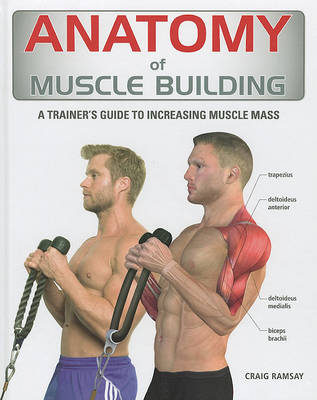The Anatomy
2 total works
Craig Ramsay is here to help! In Anatomy of Stretching, he brings the lessons learned in ten years as a trainer to celebrities and professional athletes and the star of Bravo's Thintervention to everyone. You'll learn when and how to do a tricep stretch and a shoulder stretch, when to avoid toe touches and hamstring stretches, and why it's important to keep your neck relaxed during a hip flexor stretch. While taking you through each movement step by step, Anatomy of Stretching also goes beneath the skin to allow you to see just which muscles you are working during each stretch.
Get limber -- and get the most out of your workout -- with Anatomy of Stretching!
A professional-level guide for anyone who is serious about their physique.
This is the first muscle-building instruction book written by a professional trainer that is tailored to the general reader. Its annotated full-color anatomical illustrations are revolutionary, clearly explaining which muscles are engaged in each exercise, what the exercises are designed to accomplish, and the precise interaction of the adjacent muscles.
Anatomy of Muscle Building is organized by body area to reflect the common progression of a well-planned workout. The author also supplies easy-to-follow workout plans suited to all levels of fitness and experience.
The book explains intensity, sets and repetitions and recommends duration and frequency of exercise routines. It also covers the key fundamentals of weightlifting and the benefits of free weights and machines. It includes:
- How to build muscle without gaining fat
- The importance of cardiovascular exercise
- Principles of diet for weightlifters, including the role of protein
- The pros and cons of dietary supplements
- Helpful sidebars on what to look for and what to avoid
- Exercise variations to accommodate individual differences
- Tips on achieving optimum form to achieve optimum results
A visual index helps readers navigate, and a checklist allows readers to track their exercises and progress. Beginners, serious weightlifters, competing athletes, trainers, coaches, physiotherapists and many others will find Anatomy of Muscle Building fascinating, instructive and practical.

